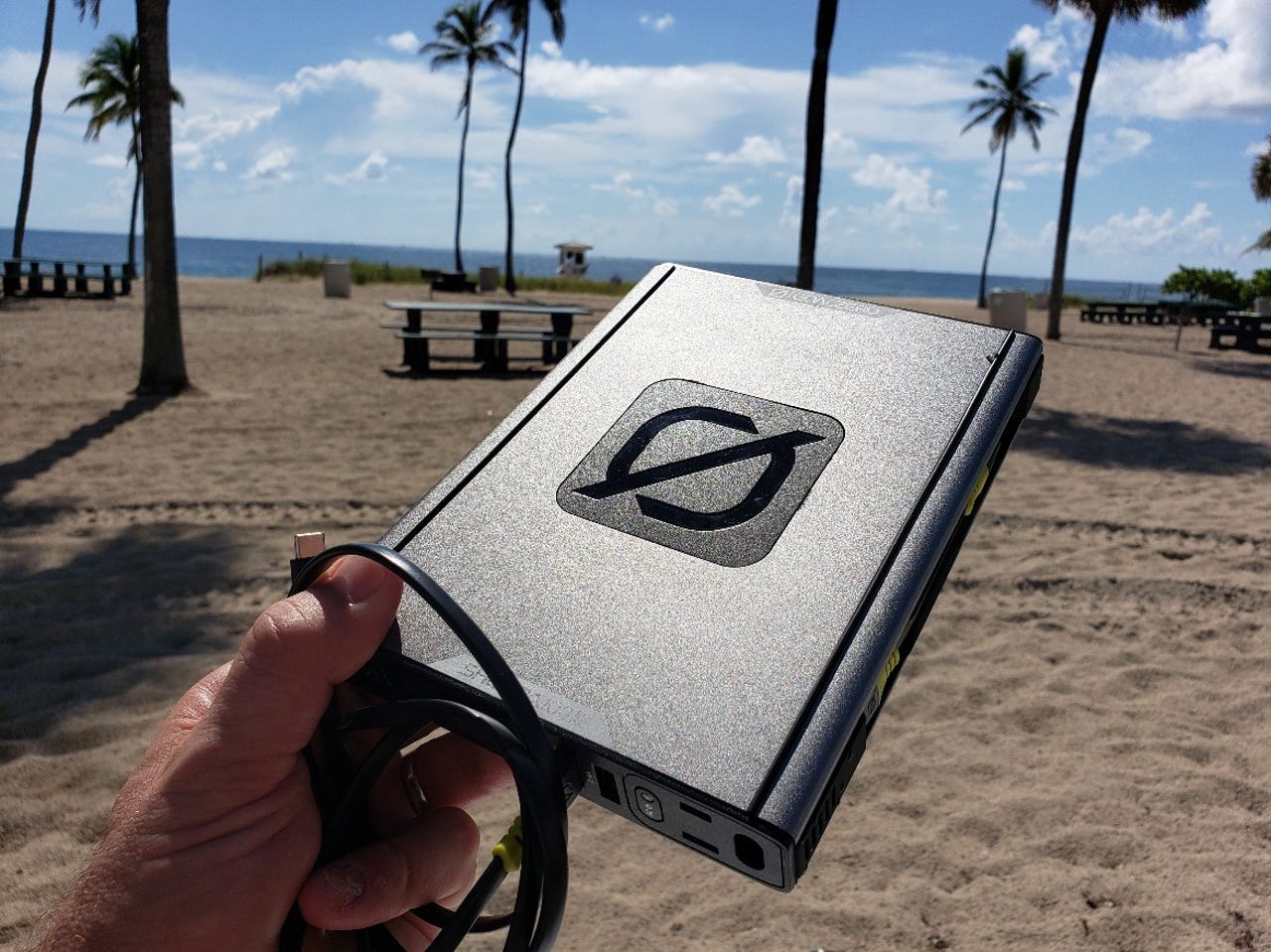Goal Zero Sherpa 100AC: Keep all your gear powered up via A/C, USB, or wireless


Featured
We have phones, tablets, smartwatches, wireless headsets, laptops, and more that need to be charged. Goal Zero's new Sherpa 100AC power bank provides 100 watt-hours of power via a 25,600 mAh capacity battery.
You could potentially charge up to six pieces of gear directly via USB-C, USB-A, A/C, and Qi wireless using the Sherpa 100AC. One side contains two USB-C PD (Power Delivery) ports that can be used to charge up the Sherpa 100AC as well as devices plugged in via USB-C to USB-C. With my PixelBook and all of my Androids having USB-C, it is great to see this standard being used on a battery pack like this. These are 60W ports so you can rapidly charge up your USB-C gear.
There are two USB-A ports that provide 5V/2.4A, and 12 Watts of power. The three prong A/C inverter provides 100W up to 150W surge power. The Qi wireless charging pad provides up to 5W max power with no cable.
There is also an 8mm DC input port above the two USB-C ports that support charging up the Sherpa 100AC via solar, A/C, or 12V charging with an A/C charger sold separately. I could use the Nomad 7 Plus solar panel to charge up the Sherpa 100AC and harness the power of the sun for my mobile devices. The 7 Plus may end up taking a long time to charge this massive battery so the Nomad 28 Plus is recommened.
Along two of the sides are cable storage areas so that you can take a couple of the included short cables to make sure you were ready to charge up your gear. The retail package includes USB-C to USB-C, microUSB to USB-A, Lightning to USB-A, and USB-C to USB-A cables. The USB-C to USB-A cable is a couple feet long while the three other cables measure about five inches in total length.
There is a small OLED panel on the Sherpa 100AC, along with five buttons. The buttons are used for turning the Sherpa on and off, selecting/scrolling through settings, toggle between output/status screens, toggle the Qi wireless charger on/off, and toggle the A/C port on/off.
The OLED panel informs you how long it will be to charge the battery and then empty it with the current power draw. Power in/out is shown with the battery level and status of the A/C and wireless charging systems. You can also view real-time information for each port with a solid bar showing the Sherpa 100AC is charging up a source (output) and a lined bar showing it is charging itself (input). You can also view details and stats for each port using the buttons so if you are a serious power nerd you will enjoy this functionality.
Since the USB-C ports are PD-enabled, you may see your device charging up the battery, rather than being charged by the battery. You can select a default input or output setting from the product detail page and make sure you have full manual control over the port.
You can also charge up the Sherpa 100AC while charging up other devices, aka pass-through charging. The Sherpa can output 170 Watts using all the ports at once. If that is exceeded, then it will stop working and a warning will appear on the OLED display. This is where the details of each port come in handy if you really intend to charge up all the gear for your squad.
Goal Zero states that the Sherpa 100AC can be charged in as short as 2.5 hours via a USB-C 60W source. The Sherpa 100AC weighs two pounds (898 grams) and measures 190 x 144 x 25.4 mm. It will be available in September for $299.99.
Goal Zero Sherpa 100AC hands-on: in pictures
I've been using the Sherpa 100AC for the last couple of weeks during my daily commute and took it on a business trip to Florida last week. It was great to have one source to power up a few devices in the shipyard at while at the beach. I also used it on the airplane to charge up my entertainment tablet since the port at my seat was not working.
To fully test the Sherpa 100AC, I used it exclusively during the week to keep my Pixelbook, Galaxy Note 9, and iPhone 10 charged up and it worked very well for this endurance test over a five day period.
The Sherpa 100AC is well built, includes solidly constructed cables, is easy to interact with on the display, and is a very reliable power source. For $15, you can purchase a zippered soft case to carry it and the cables around when you hit the road.
Goal Zero is currently holding a pre-launch photo contest to give away a few Sherpa 100AC power banks so make sure to read the instructions and enter to win your own.